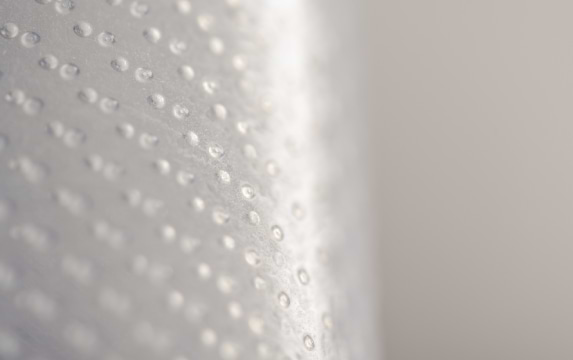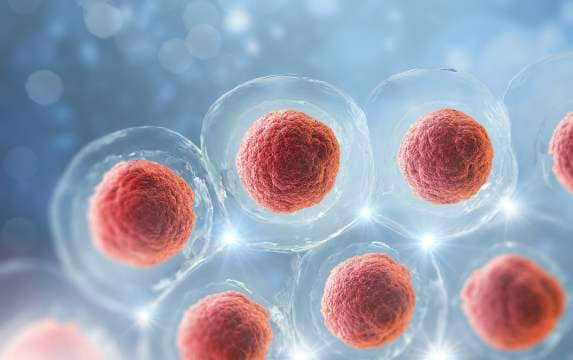Many men are seeking effective solutions for the common problem of erectile dysfunction and treatment options for impotence
They say that what happens in the bedroom stays in the bedroom, but there is usually one exception: when things are not going so well there. When it comes to male sexual health erectile dysfunction (ED) is regarded as the most common problem, and it appears that the number of diagnosed men has increased dramatically since the “blue pill” was first introduced in 1998 and made it okay to talk about it openly. Over the years many different treatment forms have been developed in addition to oral drugs. If you are dealing with erectile dysfunction don’t be discouraged. You are not alone and there are various effective treatments to help you regain control and confidence so as to enjoy an active, satisfying sex life.
General Recommendations for Treating ED
In many cases ED constitutes a marker of an increased risk of cardiovascular problems. For this reason, it is advisable to seek professional help regarding the necessary dietary and lifestyle modifications which may help prevent the development of ED or otherwise improve existing symptoms. Such modifications include weight loss, quitting smoking and drug use, limiting alcohol consumption and exercising regularly. Additionally, if there are underlying medical conditions, such as diabetes, hypertension or high blood lipids – it is important to balance them with the relevant medical treatment. Finally, certain medications might cause ED as a side effect. In this case, consult physician as to whether your current drug therapy should be modified in order to improve ED’s symptoms.
Vertica® Radio Frequency Technology for Domestic Use
A Radio Frequency (RF) based medical device for an intimate treatment at home. The idea behind the use of RF technology for the treatment of erectile dysfunction (ED), is to strengthen and restore the function of the penile erectile tissues (responsible for the erection mechanism), by utilizing energy which stimulates collagen production. This is the sole treatment that restore the natural structure of the erectile tissues. This therapeutic notion is further supported by a scientific article (2000) which recognized there was a link between the strength and quality of penile collagen fibers and the intensity of erections. Moreover, it is currently acknowledged that the weakening and loosening of collagen fibers in the erectile tissues hinder their ability to trap a large amount of blood during sexual arousal. This consequently manifests in erections which are too short or too weak, especially among men over 50 with ED.
During RF treatment, controlled thermal energy is applied to the erectile tissues without affecting the external skin tissue. The heat stimulates collagen production, strengthens existing collagen fibers, improves blood flow to the penis (through vasodilation), while promoting the formation of new penile blood vessels. The RF technology thus restores the natural erectile mechanisms, enabling the patient to enjoy once again spontaneous erections in the long run, without any preparations or planning in advance.
In a clinical trial conducted at Rambam hospital’s neuro-urology unit, the efficacy of the Vertica® medical device (RF technology) was tested on patients with ED. The results demonstrated a significant improvement in erectile function (over 85%). The patients likewise reported improvement in their sexual quality of life as well as their great satisfaction with the treatment.
In comparison to existing medications and other medical solutions (such as pills, injections, vacuum devices and penile implants), the RF technology-based Vertica® device is designed to help achieve erections in a natural, noninvasive manner, irrespective of the timing of sexual intercourse. The treatment is self-conducted at home, usually twice a week for 15-30 minutes, as necessary according to the severity of the condition.
First-line therapy for ED
This refers to the initial treatment usually recommended following diagnosis.
Oral Medications
As mentioned, in 1988 the first pill for the treatment of ED was introduced and was considered revolutionary in terms of the impact it made on ED treatment. In Israel there are 3 different prescription medications for treating ED, all belonging to the same class of drugs called ‘PDE5 inhibitors’. They are taken 1-2 hours prior to sexual intercourse (depending on the specific medication). Oral medications are regarded as one of the most effective forms of ED treatment, with a therapeutic efficacy rate of 70%. The pills increase blood flow to the penis by affecting a natural chemical (called cGMP) involved in dilating blood vessels during sexual arousal. The pills can treat ED caused by various underlying medical conditions, but they can help best when ED is caused by peripheral artery disease (i.e. when arterial blood vessels leading to the penis are not working so well). The three drugs have different absorption mechanisms and duration of action. Two of the drugs exert their effect for approximately 8 hours whilst the effect of the third medication lasts up to 36 hours. Therefore, it may be suitable for use in situations where a rigid erection is sought for periods longer than 24 hours (though only when sexually aroused), such as during weekends. It’s likewise possible to take one of the pills daily,on the lowest dose.
What else is important to know about oral drug treatment?
- The drugs exert their effects only following sexual arousal, thus taking them without sexual stimulation will not cause an erection.
- Although the drugs work well in most cases, some patients may be dissatisfied with the results, and for others these medications might not be suitable for use. For example, certain ED pills cannot be taken together with nitrate medicines, which are often used to treat angina (ischemic heart disease). Likewise, when taking alpha-blockers as therapy for hypertension or prostatic enlargement, it is necessary to wait until the dose stabilizes before initiating treatment with ED medications, in order to avoid a sudden drop in blood pressure. Although initially patients might not respond optimally to ED drug treatment, they are likely to respond better following a dosage adjustment and further guidance as to the manner of drug administration.
- Patients experiencing side effects after taking a certain ED pill can try a different pill of the same drug class. However, some patients choose to discontinue all drug therapies due to various side effects.
- The most common side effects of ‘PDE5 Inhibitors’ are headaches, facial and neck flushing, stuffy nose, indigestion, sore muscles, back pains.
- For patients with testosterone deficiency the physician might prescribe testosterone therapy alongside PDE5 inhibitors, in order to increase treatment efficacy.
- Remember that fatty meals or large amounts of alcohol can interfere with the absorption mechanisms of some ED drugs.
Second-line therapy for ED
These treatments will be offered to patients who did not respond well enough to drug therapy or to those who cannot initiate drug therapy due to medical reasons.
Vacuum Devices
There are several different devices, all off which work on a similar principle of manually creating a vacuum to achieve an erection. Treatment is conducted by inserting the penis into a plastic tube. A pump then sucks out the air from the tube so as to create a vacuum, which causes blood to be drawn into the penis, causing an erection. A soft rubber band is then placed at the base of the penis to maintain the erection after the plastic tube is taken off. The band maintains an erection for 30 minutes and thereafter it must be removed. This treatment is effective for about 75% of men, regardless of the cause of ED, particularly for those who are still able to achieve partial erections. And the benefits? They are mainly related to the simple, easy and non-invasive use of the device. The drawbacks on the other hand are mainly related to the lack of spontaneity and the possible side effects, such as penile pain, numbness, weak ejaculation and sometimes petechiae – tiny reddish spots beneath the skin’s surface.
When would it be impossible to use a vacuum device? In cases of severe blood coagulation disorders or a significant penile curvature.
Injection Therapy
This treatment used to be very common during the 80’s when drug therapy was still unavailable. Normally it works very well for 90% of men. Patients are taught how to inject the medicine through the side of the penis using a short thin needle – which is quite a simple task. Injecting the medication directly into the corpus cavernosum causes vascular dilation and a relaxation of smooth muscle, resulting in an increased blood flow into the penis. Thereafter an erection usually develops within 15-20 minutes. However, unlike with drug treatment, an erection occurs whether or not the patient is sexually aroused and it will usually last for 45 minutes.
What else is important to know?
It is recommended to wait two days between injections.
Additionally, there is a rare side effect, namely priapism – when an erection lasts for more than 4 hours following an injection. In this case the patient will be referred urgently to hospital for blood aspiration from the penis. Alternatively, if this procedure is unsuccessful, a penile injection will be given to increase blood flow out of the penis.
Urethral medication
This treatment is based on placing a small pellet (suppository) directly into the urethra (the tube which passes urine and opens at the end of the penis). The pellet contains the active constituent ‘Alprostadil’ which is quickly absorbed causing an erection within 10-15 minutes.
What else is important to know?
In comparison to penile injections this treatment is less effective (30-65% of the men achieve an erection rigid enough for penetration). The most common side effect is moderate penile pain.
This medication is not marketed in Israel.
Third-line therapy for ED
There are various surgeries for the treatment of ED. However, this option will only be recommended if all other treatments have failed.
- Penile Implant – this is a rather simple surgery, whereby a penile implant is inserted into the penis through an incision made in the scrotum, to produce an erect state. There are two different types of penile implants:
- Semi-rigid implants – though they provide permanent rigidity, they are flexible enough and can be curved slightly for concealment.
- Inflatable implants – allow for a more natural erection as the penis remains flaccid throughout the day. They are composed of a pair of cylinders implanted in the penile corpus cavernosum, a pump placed inside the scrotum and a reservoir of saline placed in the lower abdomen. Squeezing the pump will move the fluid into the cylinders in the penis to create an erection.
What else is important to know?
Penile implant surgery is irreversible. This means that if the implant needs to be removed, for example due to infection, no other treatments for ED will be available and therefore there will be no erections.
For this reason, it is important to ensure with your doctors that all other treatment options have been exhausted and that penile implant surgery is in compliance with the patient’s needs.
This type of surgery is considered very safe and it has a high success rate of 85-90%.
- Penile revascularization surgery – this therapeutic option is suitable for men with ED due to a blocked artery in the penis (just like a cardiac bypass), in cases where a single artery is blocked and there are no other underlying risk factors. The goal is to restore proper blood flow to the penis by bypassing the blocked artery. The bypass is conducted by connecting an artery in the lower abdomen to an artery at the top of the penis. Causes for penile arterial blockage include pelvic or lower extremity trauma, which can result from a road accident, falls, pelvic injuries, surgeries and even childhood trauma which manifests later on in life.
What else is important to know?
This is a highly specialized surgery which requires microvascular surgery expertise (specific, intensive training and experience). The most ideal candidates for this surgery are young men with pelvic trauma which caused a localized common penile artery lesion (blockage or tear). This procedure is not recommended for older men or men with atherosclerosis.
Additional Treatment Options
Low-intensity shockwave therapy
Generally, shock-wave therapy is a medical treatment that has been in use for many years, for example in cases of kidney stones and orthopedic injuries. In recent years, this therapy has begun to be used also in cases of ED. It consists of targeted, low-intensity shockwaves (sound waves) that encourage the growth of new blood vessels so as to induce increased penile blood flow, by using a device that delivers shockwaves to 5 regions in the penis. Studies which assessed treatment efficacy have demonstrated promising results among men who did not respond well enough to other ED treatments. However, further research is warranted to asses long term efficacy and whether it can be offered along with other ED treatments.
Shortwave therapy consists of a series of 12 short treatments without pain or side-effects.
Radio Frequency Technology
The idea behind the use of Radio Frequency (RF) technology in the treatment of erectile dysfunction (ED), is to strengthen and restore the function of the penile erectile tissues (responsible for the erection mechanism), by utilizing energy which stimulates collagen production. This was further supported by a scientific article (2000) which recognized there was a link between the strength and quality of penile collagen fibers and the intensity of erections. Moreover, it is currently acknowledged that the weakening and loosening of collagen fibers in the erectile tissues hinder their ability to trap a large amount of blood during sexual arousal. This consequently manifests in erections which are too short or too weak, especially among men over 50 with ED.
During RF treatment, controlled thermal energy is applied to the erectile tissues without affecting the external skin tissue. The heat stimulates collagen production, strengthen existing collagen fibers, improves blood flow to the penis (through vasodilation), while promoting the formation of new penile blood vessels. The RF technology thus restores erectile mechanisms, enabling the patient to enjoy once again spontaneous erections in the long run.
In a clinical trial conducted at Rambam hospital’s neuro-urology unit, the efficacy of the Vertica® medical device (RF technology) was examined on patients with ED. The results demonstrated a significant improvement in erectile function (over 85%). The patients likewise reported improvement in their sexual quality of life as well as high treatment satisfaction.
In comparison to existing medications and other medical solutions (such as pills, injections, vacuum devices and penile implants), the RF technology-based Vertica ® device is designed to help achieve erections in a natural, noninvasive manner, irrespective of the timing of sexual intercourse. The treatment is self-conducted at home, usually twice a week for 15-30 minutes, as necessary according to the severity of the condition.
Psychotherapy and Sex Therapy
Medications and treatments to induce blood flow to the penis will not help if an erection cannot be achieved due to fear, stress or anxiety (such as performance anxiety), low mood or relationship problems. This type of ED may be best treated by psychotherapy or sex therapy (individual or couples therapy) offered by a sexual health professional, through talking about the mental or sexual issues which triggered ED in a way that will reduce anxiety and improve mood. Psychotherapy and sex therapy could be combined with drug treatment if needed (such as anti-depressants or anti-anxiety medications).
Kegel Exercises
Kegel exercises are designed to improve the strength of the pelvic floor muscles, and they should be performed in 10-12 series three times a day.
This method is not considered ‘evidence-based’ and it is most likely to help in cases of mild ED.
A pilot clinical study compared between two groups of men with ED. One group practiced regularly Kegel exercises with a physiotherapist in addition to receiving biofeedback (a complementary medicine-based treatment) and suggestions for lifestyle changes. The second group was solely advised on lifestyle changes. After 3 months, men in the intervention group showed significant improvements in erectile function, while men in the second group experienced only mild improvements. After 3 months, men in both groups were asked to practice Kegel exercises for an additional period of 3 months. Thereafter, 40% of the men in both groups attained normal erectile function. Additionally, a research review from 2019 concluded that pelvic muscle exercises may be effective for improving ED symptoms as well as premature ejaculation.





